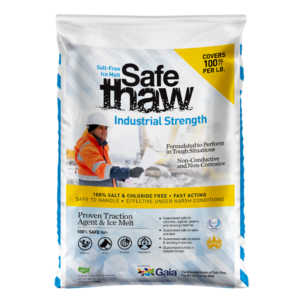List Of Best Soles For Safely Walking On Ice

It’s winter which can only mean one thing: your chances of falling on ice are increasing with every passing day. Whether you’re walking to work or your car, it’s essential to take steps that will keep you safe. Here are our top picks for soles that will help you stay upright in even the iciest conditions.
Check the soles for tread patterns.
If you’re buying a pair of boots for walking on ice or shoes for wintertime walking, look for soles with good tread patterns. A tread pattern is how the bottom of a boot or shoe looks when you look at it from the side. There are many different types of tread patterns, but some of the most common are:
Ribbed: These are often very effective on icy surfaces because they grip well and spread out your weight over a larger area so you can slide across an icy surface without falling over.
Lugged*: Lugged soles look like ridges along each side of each lug in the pattern. They provide good traction on slippery surfaces because they dig into ice and snow as you step down onto them. But if you are looking for boots that don’t slip on ice and your boots have too much lugging on their sole, then this could be dangerous if walking across thin ice. It’s because there will be too much weight onto each lug which may cause them to break through thin ice.
Smooth*: A smooth-soled boot will not grip as well as other types of soles mentioned above. However, it may still be ok if worn with crampons that attach to boots via screws or straps.
Be sure to check out the fit and traction of your boots for walking on ice
The fit of your shoes will determine how they feel when you’re walking and whether or not they’re safe for use on slick surfaces. A too-tight shoe can cause blisters, while a loose-fitting one could mean slipping on ice. If you’re trying out boots with laces or straps, ensure they have enough room, so they don’t get tangled when you walk around. This can lead to tripping and falling which can be very dangerous.
Get ready for winter with Walk On Ice instant traction on snow and ice
Use Traction Agent
Another great way of avoiding slipping and falling without using boots for walking on ice is by using a traction agent like Walk On Ice.
Walk On Ice is an instant traction agent for ice and snow that is safe for people, pets, and the environment. It comprises all-natural minerals and unique volcanic earth that will not leave any residue on your shoes or your home. It is free of harmful salts, chemicals, and chloride too.
Another unique feature is that it is highly absorbent and works on all types and thicknesses of ice, even black ice. Carry it in your bag, store it in your car’s dashboard, inside your kitchen cabinet, or even in your pocket! Spread a slight amount and see it work like magic.
Get ready for winter with Walk On Ice instant traction on snow and ice
Beyond Soles: How to Walk on Ice Without Slipping
Even if you’ve chosen the best soles for icy conditions, your walking technique still makes all the difference. So, how to walk on ice without slipping? Think “penguin mode.” Keep your feet flat, take short steps, and point your toes slightly outward. This distributes your weight more evenly and lowers the chance of your feet sliding out from under you.
Also, keep your hands free—don’t walk with them stuffed in your pockets. Your arms act as natural stabilizers, and spreading them slightly to the side can help you regain balance if you do start to slip. Remember, the right footwear helps, but your body posture is just as crucial in icy conditions.
Are Cleats for Walking on Ice Worth It?
Many people add cleats for walking on ice to their winter gear. These strap-on traction devices attach to your boots and give you metal spikes or coils that grip the ice. They’re very effective for activities like hiking or long outdoor commutes where you’ll be on ice for extended periods.
But here’s the catch—they aren’t great for transitioning indoors. Walking on hard flooring with cleats can damage the surface or even cause you to slip again. They also take extra time to put on and take off, which isn’t ideal if you’re just heading out to grab the mail or walk your dog.
That’s where a traction agent like Walk On Ice has an advantage—you don’t need to wear anything special. Just sprinkle it where you’ll step, and you’ve got instant grip. Cleats are useful, but they’re not always convenient for everyday winter errands.
Kitty Litter to Get Out of Snow: A Messy Myth
Another popular hack is using kitty litter to get out of snow when your car is stuck. It sounds clever, but in reality, it’s not as effective as many believe. Kitty litter absorbs moisture, and once it gets wet, it clumps up and turns mushy. Instead of giving your tires traction, it can make the area sloppier and harder to clean afterward.
Some biodegradable litters perform slightly better, but they still aren’t designed to grip slick ice. Plus, once the snow melts, you’re left sweeping soggy clay or biodegradable mush off your driveway. It’s not exactly practical.
If your car is stuck, clearing the snow around the tires and then sprinkling Walk On Ice under them works much faster and without the mess. It gives your tires a rough surface to grab onto and gets you moving again in minutes.
Does Sand Help with Ice, or Just Create More Work?
People have been asking for decades: does sand help with ice? The answer is yes—but only in one limited way. Sand doesn’t melt ice at all; it simply creates a gritty surface that provides temporary traction. That can be useful in the short term, but the downsides add up.
For one, sand scatters easily, so you’ll need to reapply it frequently. Second, it often washes into drains or gets tracked into your house, leaving a gritty mess. Municipalities spend a fortune cleaning up road sand every spring because of the buildup.
And if you’re spreading it on stairs or wooden decks, sand can actually scratch the surface over time. In contrast, traction agents like Walk On Ice absorb the thin layer of water that makes ice slippery and create an immediate non-skid surface—without scratching or leaving a gritty residue behind.
A Smarter Winter Safety Strategy
So where does this leave us? Soles with good tread patterns, cleats, sand, and even kitty litter all have their place. But each comes with limitations—either they’re messy, inconvenient, or only work in certain situations.
The smarter approach is layering your safety strategies:
- Choose boots with proper soles.
- Adjust your walking style to prevent slips.
- Keep a canister of Walk On Ice handy for when you need instant traction.
- Save sand or kitty litter for absolute emergencies, but know they’re not long-term fixes.
Winter doesn’t have to mean endless slips, slides, and frustration. With the right combination of techniques and tools, you can face icy sidewalks, slushy driveways, and snow-packed roads with much more confidence.
Conclusion: Walk With Confidence This Winter
At the end of the day, winter safety isn’t just about having the best soles—it’s about knowing how to walk, what extra gear to use, and when to skip old-school hacks like sand or kitty litter. While cleats for walking on ice can give strong traction and sand can provide temporary grit, they both have trade-offs. Kitty litter might help in a pinch, but it often creates more problems than it solves.
The key to real confidence is preparation. Learn how to walk on ice without slipping, invest in the right footwear, and keep Walk On Ice on hand for those tricky spots where other solutions fall short. That way, instead of worrying about every icy patch, you can enjoy the winter season safely and stress-free.

Other Ice Melt Products
Safe Paw
The Original and #1 Selling Pet and Child Safe Ice Melt for over 20 years. Guaranteed environmentally safe – will not harm waterways and sensitive wetlands. All products are made in the USA.

Safe Thaw
Imagine an ice melt you can put down and never worry about. It won’t harm pets, kids, and your property. That’s Safe Thaw. Unlike anything else on the market, Safe Thaw can change how winter affects our planet.


